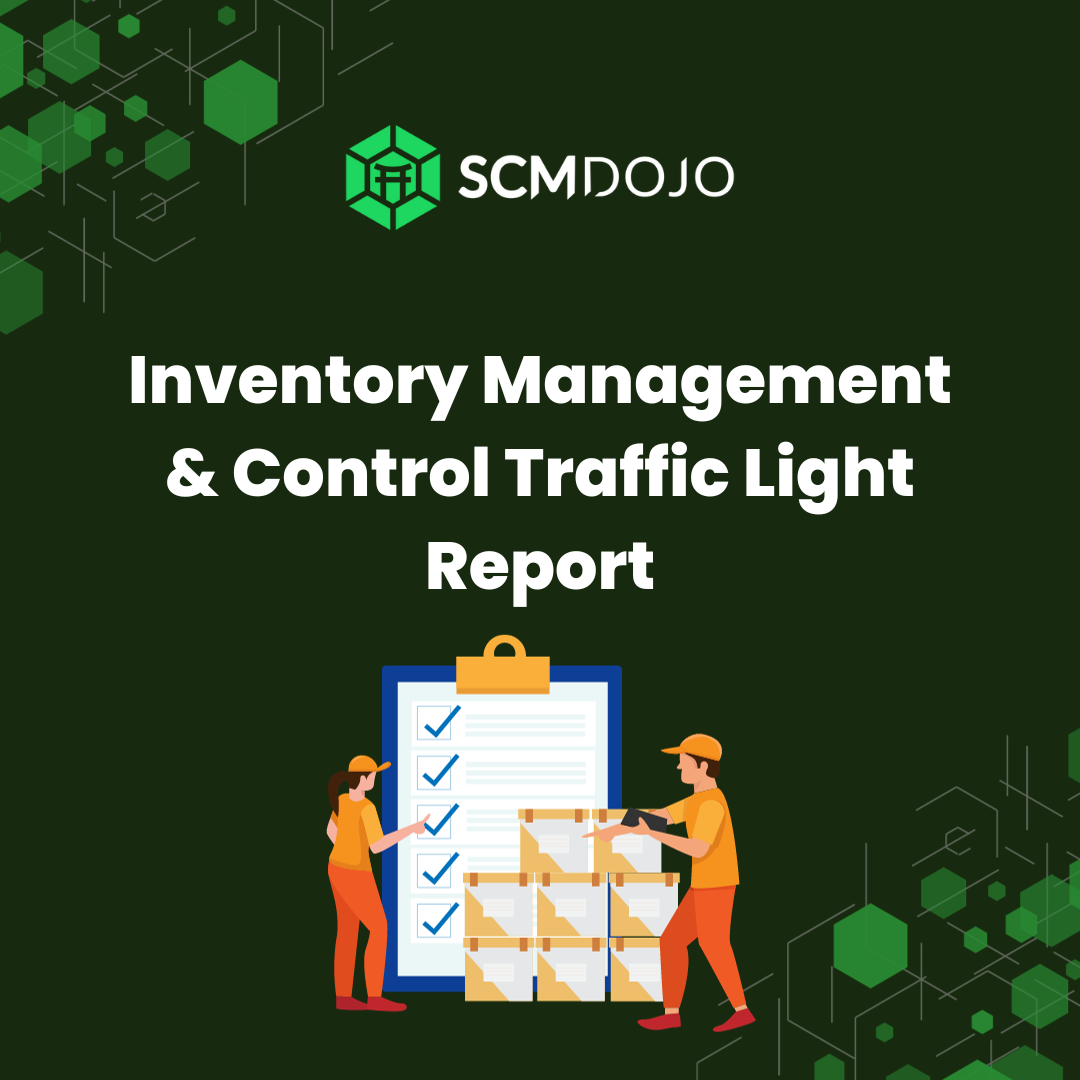Definition: Inventory Rationalization
- The action of attempting to explain or justify behavior or an attitude with logical reasons, even if these are not appropriate.
- The action of reorganizing a processor system so as to make it more logical and consistent.
The article, “Controlling Just Noticeable Differences in Quality”, by Joseph M. Kamen, published in the November- December 1977 issue of Harvard Business Review has influenced me over my career. In the article, Mr. Kamen talks about changes to products, process or operations that are almost so small as to not be noticed, but when added together over a period of time, the change is noticeable.
Get Excess and Obsolete Inventory Policy
The situation happens with inventory as well. In my experience, most inventory rationalization projects are initiated when someone wakes up one morning as exclaims, “What the heck is going on with inventory? We’ve got to do something about it. “
When inventory rationalization projects happen, they tend to focus on a couple of approaches: reduction of total inventory, improvement in overall inventory performance or reduction in the number of SKU’s. There is not a one-size fits all approach and the research and resolutions are varied. A critical factor in this endeavor is to take a hard look, a deep dive, into the symptoms exhibited and the root causes of the inventory. You have to look at the data, ask hard questions and THINK about what the data is telling you in the context of YOUR organization.
What follows, in no specific order, are some of my observations AND approaches that I’ve used to address inventory rationalization projects. Keep in mind that each organization is different and you have to “peel the onion” to understand the driving forces.
ACCOUNTABILITY VERSUS RESPONSIBILITY
As supply chain/operations people, we tend to focus on managing inventory in areas that we have control and using the tools and the metrics that we have available at our disposal.
However, one of my learning’s over the years has been how little control we have over various aspects of inventory creation. By that I mean who determines what items (SKU’s) we stock. It can include marketing, merchandising, engineering and sales people.
So while we (the supply chain/operations professionals) tend to be held accountable for inventory performance with metrics such as total inventory levels, turnover and service levels, there are others in the organizations who impact what we stock and are in position to make inventory decisions for which they have no accountability.
ABC CODES
References are made in the literature to using ABC codes in this effort. I’m a big believe in the use of ABC codes, particularly for reporting. A primary requirement is that the ABC codes have been assigned using a “proper” methodology. There are many ways to assign ABC codes and if done right, they should serve as a base for analysis, but I’ve seen many poorly applied ABC code structures. The two most frequent improper applications that I have seen are basing the ABC code of an item on the on-hand inventory value of an item rather than on demand and using almost every letter in the alphabet for some sort of “intelligent” coding for the items. In either case, the ABC code is basically useless for inventory rationalization analysis.
A starting point to use ABC codes is to generate summary reports by ABC. Typically this would be a count of the number of items for the code, the sales over the reporting period, cost of sales/usage, inventory on-hand, gross margin and inventory turnover for the category. With this information, you can calculate GMROI (Gross Margin Return of Inventory Investment) for retailers, wholesale/distributors and possibly finished goods for manufacturers.
For examples of ABC reporting and Details on GMROI, see my website, http://inventorycurve.com. There is a page on GMROI and both ABC reporting and GMROI are discussed in the Harvard Business Review article, “Sharpening Inventory Management”.
When you do this analysis, you will like find that the A items have a relatively high turnover rate and the C’s will tend to be low. What is interesting is that in many cases, a response to a directive to get inventory down results in cutting A’s. Why? Because they are the most visible and easy to cut. This can be done, but usually with disastrous results.
My experience is that A items have service issues and C items have turnover and excess inventory issues. A items tend to be “self liquidating”. By that I mean that if you stopped procuring the A items (not that you would ever do that), the inventory will be consumed in reasonably short period of time. The C items, on the other hand tend to have low turnover meaning that it will take a long time to consume the inventory.
In many cases, I have advocated increasing the inventory for A items to improve service and then start work on improving the performance of the C’s and the B’s. Even though this results in an increased in A item inventory value, since the A’s should represent a small proportion of the total inventory items, reduction of the value of C’s and B’s over time will result in a net reduction in total inventory value and hence, an improvement in overall inventory turnover.
LOOKING FOR LOW PERFORMERS
In retail, wholesale/distribution and for manufacturing finished goods, a successful approach has been to look at GMROI at the item level. GMROI is a “turn and earn ratio that used margin and inventory turnover. It seeks to answer the question, “How much gross profit is earned for each dollar carried in inventory?”
There is no single right answer. You need to determine the numbers for your own organization. A place to start is to compute the GMROI for your organization based on the financials, then start looking at individual items.
In one wholesale/distribution company where we did this, we established a low GMROI target level, below which we labeled the items as dogs. Then we started looking at the items: how much inventory did we have, what were the margins, how frequently did it sell, why was it in inventory in the first place?
This was a collaborative effort involving operations, sales, marketing and finance. Initially, each item was justified by a reason for its existence, very much in line with definition #1 listed at the beginning of the article: We need it to round out the product line, we have to carry all items to get the franchise in this market or we carry this for customer xyz.
The more items we reviewed, the more it became obvious that most of these items had been brought in for bogus reasons. This was true, in particular, for customer held inventory. What we learned was that during a sales call and presentation of a product line, the customer would ask, “Do you have this specific SKU in stock?” The sales person would respond, “No, but I can get it for you”. Then when the salesperson got back to the office he would report, “Customer XYZ wants this. We need some in stock.” And voila, we had a new item in inventory.
Once, we realized what was happening, we were able to go back to the customers that had requested the items and work with them to get them used. Moving forward, we implemented a program where estimates of usage from the customer were required before bringing the item into stock. A favorite memory of mine was being invited by the top salesman in a location to visit his customers and explain the program to them. He was sure that I would get bashed by the customers, but instead, the general response from the customers was for them to laugh and say something like, “We require that of our customers, I guess we can do it for you”. Over time we eliminated significant numbers of SKU’s that were not needed and we tightened up the method of bringing in new customer-specific items with the end result of fewer SKU’s and improved overall inventory performance.
Another thing we discovered was that there was a wide range of purchasing practices for standardized products between the various branches. For the standardized items, we centralized procurement resulting in better pricing, more consistent deliveries, and improved service.
ENTROPY AND EMPLOYEE TURNOVER
Systems and operations decay and employees change. It is a slow process, but it can lead to increased inventory.
As people cycle through companies, operations change. I’ve seen it and I’ve done it. As a manager, there is an expectation for continual improvement. Sometimes, it is expressed as a crisis and under those circumstances; the reasons for prior decisions may be poorly understood and ignored. This can lead to inflated numbers of SKU’s and inventory investment changes.
One cause that I observed on multiple occasions in manufacturing companies was the growth in the number of SKU’s for raw materials. Looking for the root cause, we discovered that when new products were being introduced, different teams of engineers and designers were assigned to different projects and as a result the process created redundancies.
We found that the designers and engineers did not have good ways to “understand” the parts that were already approved and in use. They were not encouraged to check out the warehouses to visually see what was being used and the ERP systems were not tailored to allow them easy access to part identification and specifications. As a result, it was easier for the designers to go to a catalog and add a new part rather than identifying an existing item that they could use.
Even if a common item was selected, it was often easier to crate a new part number for the item than incorporate the pre-existing part number into the new product.
As an extreme example in a contract manufacturing organization, we had taken over manufacturing for a major electronics company with products transferred for multiple customer plants to multiple manufacturing plants of our own. To develop purchasing economies of scale, we attempted for identify common parts. This was a daunting task. On one case, we identified 23 different parts numbers being used for a single capacitor.
MASTER DATA MANAGEMENT – Key for Inventory Rationalization
To help cope with redundancy, there a couple of approaches that can be used to manage the master data in systems. Both of these can help.
One approach is to have “core or commodity” managers who are the only people authorized to add parts into the system. Their role is to have enough knowledge and authority to be able to identify possible redundancies before they are ever created.
A second approach that was used in a manufacturing organization was to create a formal engineering specification on the naming and description of parts. By standardizing the description, the system became much more user friendly and allowed for much easier part searches and look-ups.
This is not intended to be an exhaustive list of causes and solutions to all inventory rationalization initiatives. Rather, I hope it gives you insights and ideas that you can use within your own organization as you constantly work to make your inventory more productive.
If you like the post by David on Inventory Rationalization please leave your comments to invite more expert guest post.
Guest Post by David J. Armstrong,
Principal Inventory Curve, LLC
After 40 plus years of diverse experience in inventory, supply chain, logistics and materials management operations and systems; I’m now writing, providing selective consulting and fractional supply chain management services.
For more detail and to see publications available for purchase, please visit my website at www.inventorycurve.com.
Recommended Guides
Stocktaking: The Ultimate Guide to Creating Your Very Own Customised Stocktake Procedure
Materials Management Technical Competencies Self Assessment tool
About the Author- Dr Muddassir Ahmed
Dr MuddassirAhmed is the Founder & CEO of SCMDOJO. He is a global speaker, vlogger and supply chain industry expert with 17 years of experience in the Manufacturing Industry in the UK, Europe, the Middle East and South East Asia in various Supply Chain leadership roles. Dr. Muddassir has received a PhD in Management Science from Lancaster University Management School. Muddassir is a Six Sigma black belt and founded the leading supply chain platform SCMDOJO to enable supply chain professionals and teams to thrive by providing best-in-class knowledge content, tools and access to experts.
You can follow him on LinkedIn, Facebook, Twitter or Instagram






